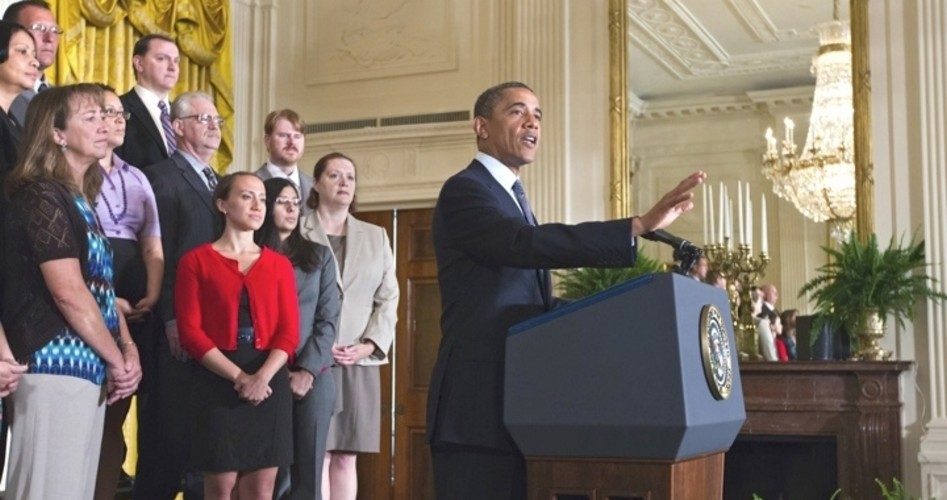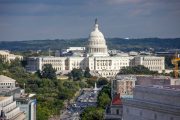
When President Obama’s tax plan was revealed, international accounting giant Ernst & Young (E&Y) was asked to analyze it by the National Federation of Independent Business and the U.S. Chamber of Commerce. When the firm announced its conclusions that his plan would slow the weak economy even further, the White House attacked the study as containing “major flaws, errors and misleading statements.”
Obama’s tax plan is more than just “tax the rich” — it contains a mixture of tax credits for hiring new employees, a mortgage credit, an “American Opportunity Tax Credit” to entice more young people to get into debt to fund their college educations, an increase in the child and dependent care tax credits, and an extension of and increase in the earned income tax credit.
It would also eliminate all income taxes for seniors with incomes less than $50,000 per year, and would temporarily eliminate income tax on unemployment insurance benefits — both clear political plays for the senior and unemployed vote in the November elections.
It also reinstates the estate tax and would eliminate “loopholes” for oil and gas firms, while providing tax credits for green “renewable” investments. It would create a watch list of international tax havens in order to force “greater financial disclosure” to discourage the use of tax shelters by the wealthy trying to avoid taxes.
But the centerpiece of Obama’s plan is allowing the Bush tax cuts on incomes, capital gains, and dividends for those making over $250,000 a year to expire — essentially a huge tax increase on those with capital. And that’s what the report’s authors, Drs. Robert Carroll and Gerald Prante, focused on: What impact would the imposition of those new taxes have on the economy and job creation? Simply put, from the perspective of those harboring an “anti-capitalist” mentality, it works just fine.
This report finds that these higher marginal tax rates result in a smaller economy, fewer jobs, less investment, and lower wages. Specifically, this report finds that the higher tax rates will have significant adverse economic effects in the long-run: lowering output, employment, investment, the capital stock, and real after-tax wages when the resulting revenue is used to finance additional government spending.
Through lower after-tax rewards to work, the higher tax rates on wages reduce work effort and labor force participation. The higher tax rates on capital gains and dividend increase the cost of equity capital, which discourages savings and reduces investment. Capital investment falls, which reduces labor productivity and means lower output and living standards in the long-run.
Overall, this study finds that the higher tax rates would reduce output in the long-run by 1.3% when the proceeds are used to finance additional government spending. Employment would fall by 0.5%. In today’s economy these changes would translate into a decline in GDP of $200 billion and employment by roughly 710,000 jobs.
The authors noted that with the increased disincentives to take risks and invest capital, entrepreneurs would be likely to spend less time in the office and more time on the golf course: “[These tax increases] can be expected to both reduce disposable incomes and reduce labor supply by reducing the price of leisure.” (emphasis added) In plain English, Obama’s tax plan, according to Ernst & Young, would result in decisions by those entrepreneurs not to work so hard, asking “what’s the point?”
There would be the inevitable decline in the average worker’s income as jobs would be less plentiful (already a problem in today’s economy) and workers would be forced to accept ever lower wages just to find work. Said the authors:
These results …[mean] that allowing the top tax rates to increase come economic consequences. Long-run output can be expected to fall … and workers’ real after-tax wages may also be lower.
As expected, the White House, rather than reconsidering its plan in light of the Ernst & Young study, tried to downplay the study’s importance. It attacked the authors as having a vested pro-business stance, with one of them being a “former Bush employee” which automatically made it impossible for him to be objective.
The response was crafted by Jason Furman, principal deputy director of the National Economic Council — created by executive order by President Clinton — and part of the White House policy-making staff. Furman himself sports degrees from establishment universities Harvard and the London School of Economics and provided advice and counsel to the presidential campaigns of Al Gore and John Kerry. In other words, the critiques of the Ernst & Young study are firmly in the anti-capitalist Obama camp, viewing the study as nothing less than an impediment that needed to be marginalized.
First of all, Furman complains that the E&Y study assumes that revenues coming from the tax hikes will be spent on new government projects instead of reducing the deficit as promised by the president. Really. Furman said the president intends, instead, to take those new revenues and use them to pay down the national debt:
The President has proposed to let the high-income tax cuts expire and use the resulting $1 trillion in “savings” … as part of a balanced plan to reduce deficits and debt.
[But the E&Y] study explicitly assume[s] that the revenue would be used entirely to finance additional spending.
Of course the authors at E&Y are simply reflecting reality. When President Reagan hammered out his tax cut proposals with Congress, he extracted promises of spending cuts of $3 for every $1 of tax increase. Those spending cuts never happened, and the authors were wise enough not to believe the current president but rather to rely on history: When Congress gets new revenues, it spends them.
Furman also found it convenient to attempt to confuse his readers by referring to a Congressional Budget Office study that showed, somehow, that Obama’s plan would generate economic growth: “The conclusions [by E&Y] are still dramatically out-of-line with estimates by … the Congressional Budget Office.” Unfortunately an extensive Internet search for such a study failed to come up with anything except a CBO study showing that if the Bush tax cuts were allowed to expire, the economy would “shrink by 1.3 percent in the first half of next year,” noting that “such a contraction in output … would probably be judged to be a recession.”
All of this is just monkeyshines and a distraction. There is little likelihood of anything substantial being done before the election, given Congress’ reluctance to tackle such sensitive issues. And after the election, the lame-duck Congress will be only too happy to sit on its hands and wait until 2013 so that the new Congress can deal with the mess the present Congress is leaving behind.
Photo: President Barack Obama lays out his tax plan during an announcement from the East Room of the White House in Washington, July 9, 2012: AP Images

